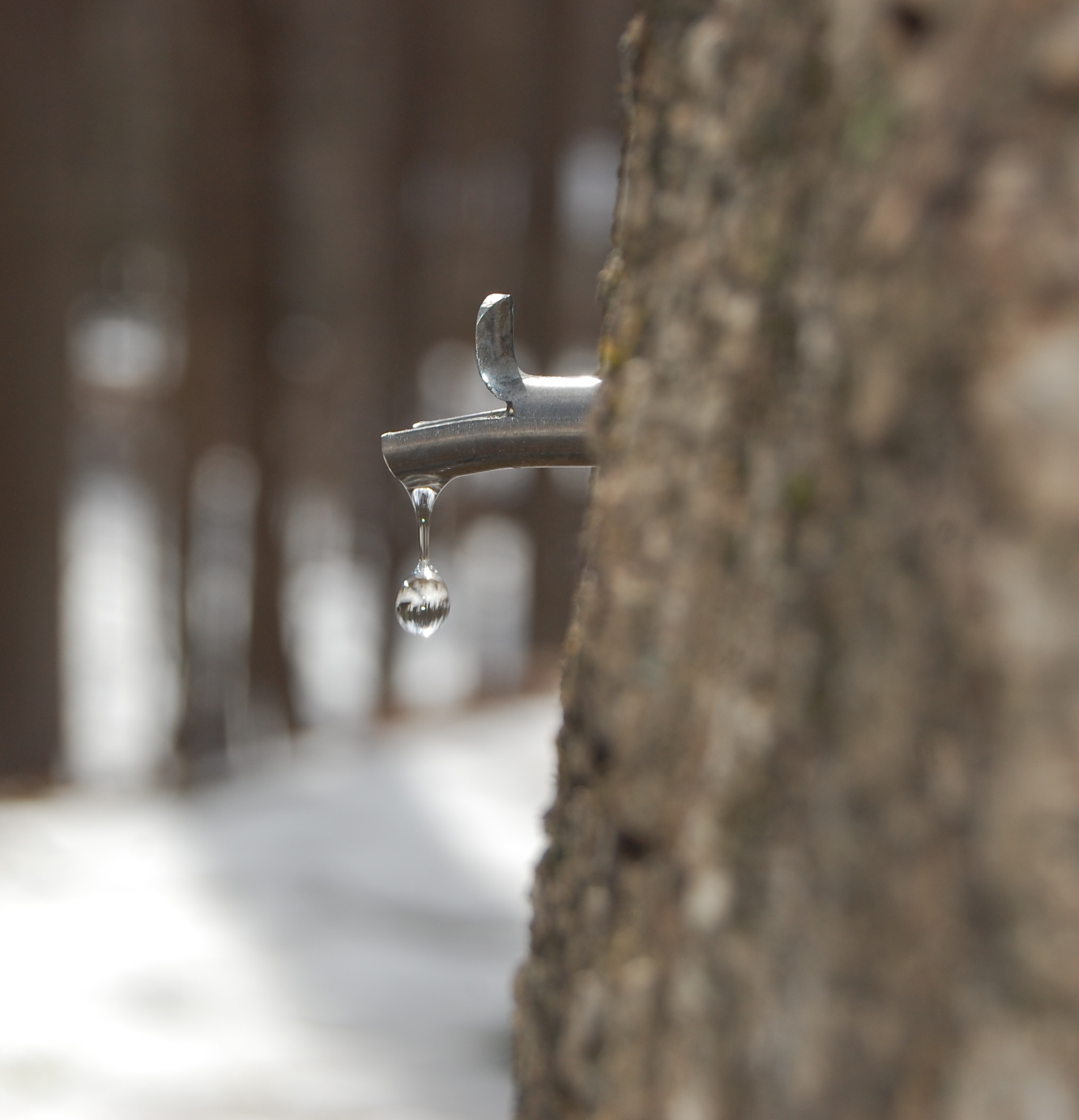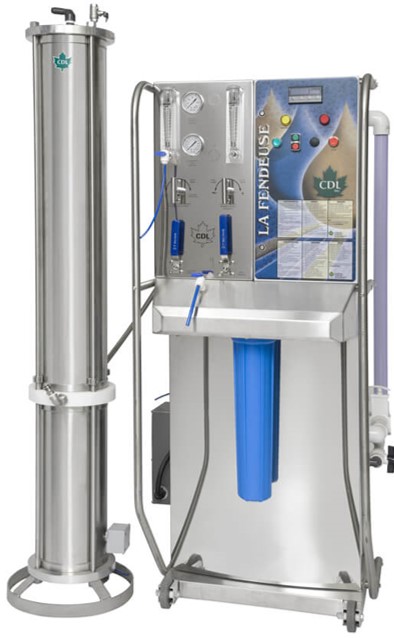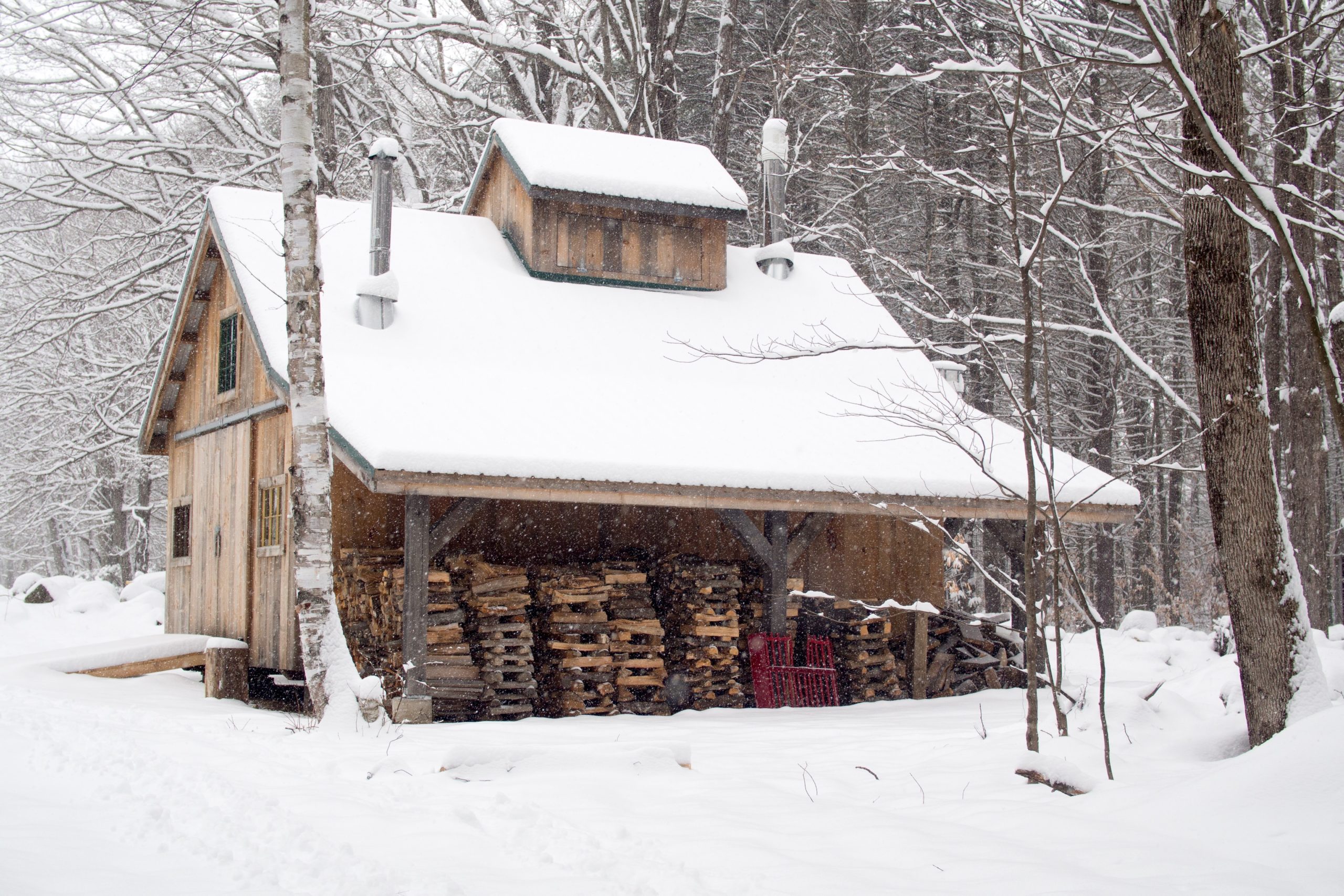Maple
Energy Saving Measures for Maple Farms
This page discusses measures that apply to most maple farms in New York State, whether small with tens or hundreds of taps, or large with thousands of taps. We also recommend the Cross-Farm Technologies page where you will find applicable measures for multiple farm types, related to lighting, space heating, and preventative maintenance.
Energy used in maple syrup making can vary significantly between farms. Below, we summarize common recommendations for maple farms to save energy and money. Explore the subject areas below or download print-ready fact sheets about them.
If you are interested in more detailed information or support, sign up for a free energy assessment or contact us for general support.


Reverse Osmosis
In modern sugarhouses, much of the water content in sap is removed using reverse osmosis (RO). RO can quickly remove water from sap and can be safely left unattended while running. It costs less to remove water with RO and less energy is required for RO than to boil water away as steam.
RO is a process by which sap is passed through a porous membrane, utilizing hydrostatic pressure greater than the osmotic pressure. Water is squeezed out of the membranes, but the sugars, minerals, and other compounds are too big to fit through the membrane and are left behind in a concentrated form. It is that concentrate that is then boiled in an evaporator to make finished maple syrup.
RO can be used to concentrate sap to various sugar levels depending on the equipment used. Small RO systems might bring the sugar level from 2% up to 4%, and commercial units typically concentrate to between 10% and 20% while specialized high-Brix systems can bring the sap to as high as 32% sugar concentration. Rough numbers show that 4% concentrate cuts time in half, 8% cuts in half again, 16% cuts in half again, and 32% cuts in half again. What started as an eight-hour work day with the evaporator can be cut down to a few hours and half as much energy required when using RO.
RO systems need routine maintenance, such as cleaning membranes after each use and replacing membranes every 5 to 10 years, but the effectiveness of RO systems in reducing evaporator runtime and saving energy makes them worthwhile.
The fact sheet below discusses general efficiency measures for maple farms, focused primarily on RO technology. This fact sheet also includes a table summarizing common recommendations for maple farms.
Evaporator Efficiency
The evaporator used by a maple farm is the main energy end-use on the farm. We summarize how different features and fuels can save energy and money when evaporating sap to make syrup. The information below is available both on this webpage and in a print-ready fact sheet.

Energy used by the evaporator can be reduced by 1) pre-concentrating the sap through reverse osmosis (RO); 2) pre-heating the sap; and 3) improving evaporator efficiency. The energy source used to power evaporators also affects costs, operations, and environmental impacts. Pre-concentrating sap is discussed above, and below are brief overviews about pre-heating sap, improving evaporator efficiency, and powering an evaporator.
Pre-Heating Sap
Sap pre-heaters have different designs, but the idea is generally the same: steam is captured over the flue pan and its heat is used to warm sap. In heat recovery systems, a series of pipes carries cold sap through hot steam. In steam-enhanced systems, steam is routed through pipes submersed in cold sap. In both cases, sap leaves the pre-heater warmed (sometimes near boiling temperatures) and hot condensate is collected separately for other uses (cleaning equipment, warming surfaces). Reports indicate that a properly sized pre-heater will increase the efficiency of an evaporator by 15-20%. More advanced devices use high pressure to cause water vapor to leave the sap before it reaches its boiling point or enters the flue pan. In these systems, sap is both pre-heated and concentrated before entering the flue pan, further improving efficiency.
Sap pre-heaters do add maintenance to the farm workload. Pre-heating devices need to be regularly cleaned and sap should not be left in the pre-heater between runs. Steam-Aways and similar units require more effort to clean. Adequate overhead space and a safe system for lifting hoods and pans make it easier to access and clean sap pre-heaters.
Evaporator Efficiency Features
In addition to RO and pre-heating with steam recovery, there are evaporator features that can reduce waste heat. Examples include an air-tight door (on wood-fueled evaporators), an insulated arch, a forced draft unit, barometric dampers, and a flue pan with maximum surface area. For more guidance on high-efficiency evaporator features, see the North American Maple Syrup Producers Manual (2022). When considering a new evaporator, the most cost-effective selection over the life of the device tends to be an evaporator with a pre-heater and a high-efficiency arch.
Powering the Evaporator
Energy sources vary in their cost, availability, environmental impact, and operating requirements. With the aim to strengthen New York State businesses, improve environmental impacts, and increase farm resilience to volatile energy markets, certain energy sources stand out as likely energy sources for sugar shacks in the future.
On smaller scales, firewood harvested using ecological forestry can be a sustainable part of the carbon cycle and an affordable, reliable option for maple farms. This is especially true with proper firewood management (see Heating with Wood, 2019). Propane may also have a place in some sugar shacks, where wood or electric power and evaporators are not suitable.
For larger farms that are ready to upgrade or replace equipment, electric evaporators may be worth considering for their many potential benefits: electric power can be sourced from various means; electric evaporators recover all energy contained in sap; no emissions are produced on-site; electrical devices can be automated and integrated with RO and Brix equalizer systems; and given operating efficiencies, costs of production per gallon of syrup can be lowest. Electric evaporators are a relatively new technology and it will take time to better understand their performance and suitability for New York maple farms.
Table 1. Energy cost per gallon of syrup, using different fuels and efficiency technologies.
| Open Pan Evaporator | Pre-heating | Steam-Away | Reverse Osmosis (10 Brix) | RO and SteamAway |
| Wood | $9.28 | $5.62 | $1.75 | $1.09 |
| Wood/air tight arch | $5.71 | $3.46 | $1.10 | $0.69 |
| Fuel oil | $15.31 | $9.28 | $2.85 | $1.75 |
| Natural gas | $6.19 | $3.75 | $1.19 | $0.75 |
| LP gas | $18.21 | $11.04 | $3.38 | $2.07 |
Table Notes:
- This table is derived from Winship (2001) using more recent estimates of fuel prices: $250/full cord of wood, $4.64/gallon of fuel oil, $1.36/therm of natural gas, $3.72/gallon of LP gas, and $0.16/kWh electricity. Price of wood is assumed as cost for maple producers to process their own firewood; prices of other energy sources are NYS averages of residential prices in March 2022, based on NYSERDA energy price monitoring programs. Fuel oil price is midway between max. and min. price, September 2021-2022.
- This table assumes the Brix of sap concentrated through reverse osmosis will be 10%.
